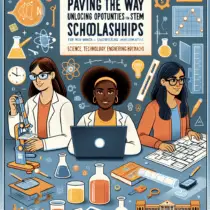College life can be daunting, especially for new students who are navigating their way through this exciting yet challenging chapter in their lives. With the freedom and independence that come with college, it is crucial for students to learn how to navigate this new world successfully. From managing time effectively to maintaining a healthy work-life balance, there are various aspects of college life that require careful attention. This comprehensive student guide aims to provide valuable insights and practical tips for students to make the most of their college experience.
Time Management: Mastering the Art of Balancing Priorities
One of the biggest challenges students face in college is managing their time effectively. With demanding academic loads, extracurricular activities, part-time jobs, and social commitments, it can often feel overwhelming to juggle multiple responsibilities. However, with proper planning and organization, students can find a balance that allows them to excel academically while also enjoying other aspects of college life.
Create a Schedule: Start by creating a weekly schedule that outlines your classes, study time, work hours, and any other commitments you may have. Allocate specific time slots for each activity and be diligent in sticking to your schedule.
Prioritize Tasks: Identify tasks that are high priority and must be completed first. This could include studying for upcoming exams or completing assignments with tight deadlines. By tackling these tasks first, you can alleviate stress and create a sense of accomplishment.
Avoid Procrastination: Procrastination is the enemy of productivity. Be proactive in starting assignments early rather than leaving them until the last minute. Break larger tasks into smaller manageable chunks to make them less intimidating.
Maintaining a Healthy Work-Life Balance
College isn’t just about academics; it’s also about personal growth and exploration. While it’s important to devote time and energy to your studies, it’s equally crucial to maintain a healthy work-life balance to avoid burnout and enjoy your college experience fully.
Take Breaks: It’s essential to take regular breaks during study or work sessions. Short breaks can help improve focus and concentration. Use this time to stretch, go for a walk, or engage in a hobby that relaxes you.
Prioritize Self-Care: Your physical and mental well-being should never be compromised. Make sure you’re getting enough sleep, eating nutritious meals, and engaging in activities that help reduce stress. This will ultimately enhance your productivity and overall college experience.
Engage in Extracurricular Activities: College offers a plethora of extracurricular activities such as clubs, sports teams, and volunteer organizations. Engaging in these activities not only helps you meet new people but also allows you to explore your interests outside of academics.
Navigating Social Relationships: Building Connections
College is a melting pot of diverse individuals from various backgrounds. It presents an excellent opportunity for students to build meaningful connections and expand their social networks. Here are some tips for navigating social relationships in college:
Be Open-Minded: Approach every interaction with an open mind and a willingness to learn from others. Embrace diversity and respect the opinions and perspectives of your peers.
Join Clubs or Organizations: Participating in clubs or organizations related to your interests is an excellent way to meet like-minded individuals who share similar passions.
Attend Campus Events: Colleges often organize events such as orientations, workshops, or guest lectures. Attend these events to meet new people and engage in enriching conversations.
FAQ
Q: How can I manage my time effectively in college?
A: To manage your time effectively, create a schedule, prioritize tasks, and avoid procrastination. Breaking down larger tasks into smaller ones can also help.
Q: How do I maintain a healthy work-life balance in college?
A: Take regular breaks, prioritize self-care, and engage in extracurricular activities. Balancing academics with personal growth is crucial for a healthy work-life balance.
Q: How can I build connections and expand my social network in college?
A: Be open-minded, join clubs or organizations that align with your interests, and attend campus events to meet new people and engage in meaningful conversations.
College life is filled with endless opportunities for growth and self-discovery. By mastering time management skills, maintaining a healthy work-life balance, and nurturing meaningful relationships, students can navigate their college years with confidence and make the most of this transformative experience.






